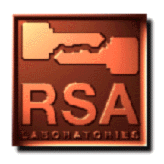

The Clipper chip contains an encryption algorithm called Skipjack (see Question 80), whose details have not been made public. Each chip contains a unique 80-bit unit key U, which is escrowed in two parts at two escrow agencies; both parts must be known in order to recover the key. Also present is a serial number and an 80-bit "family key" F; the latter is common to all Clipper chips. The chip is manufactured so that it cannot be reverse engineered; this means that the Skipjack algorithm and the keys cannot be read off the chip.
As specified by the Escrowed Encryption Standard, when two devices wish to communicate, they first agree on an 80-bit "session key" K. The method by which they choose this key is left up to the implementor's discretion; a public-key method such as RSA or Diffie-Hellman seems a likely choice. The message is encrypted with the key K and sent; note that the key K is not escrowed. In addition to the encrypted message, another piece of data, called the law-enforcement access field (LEAF), is created and sent. It includes the session key K encrypted with the unit key U, then concatenated with the serial number of the sender and an authentication string, and then, finally, all encrypted with the family key. The exact details of the law-enforcement field are classified.
The receiver decrypts the law-enforcement field, checks the authentication string, and decrypts the message with the key K.
Now suppose a law-enforcement agency wishes to tap the line. It uses the family key to decrypt the law-enforcement field; the agency now knows the serial number and has an encrypted version of the session key. It presents an authorization warrant to the two escrow agencies along with the serial number. The escrow agencies give the two parts of the unit key to the law-enforcement agency, which then decrypts to obtain the session key K. Now the agency can use K to decrypt the actual message.
Further details on the Clipper chip operation, such as the generation of the unit key, are sketched by Denning [Den93].